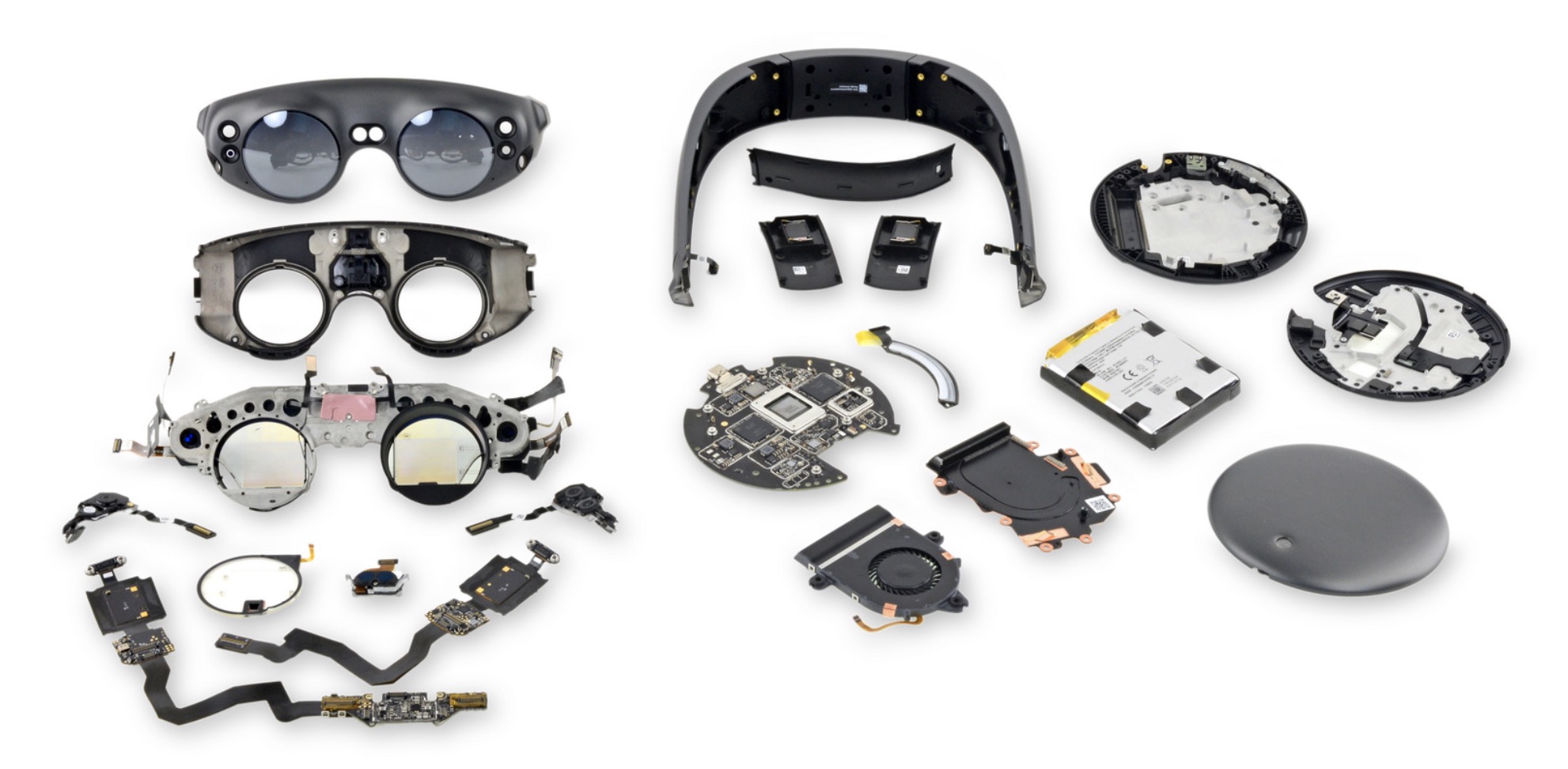Since its earliest days, Magic Leap has opted not to reveal the “magic” powering its augmented reality platform, but a comprehensive teardown from iFixit today has revealed all of the components powering its Magic Leap One headset and computer. The most notable discovery is a unique multi-layered display designed to bring the company’s “spatial computing” vision to life.
Traditionally, wearable headsets have used video screens that are basically identical to televisions, but much smaller. In order to create augmented imagery that blurs the line between “virtual” and “reality,” Magic Leap One instead includes a six-layer waveguide display, akin to placing multiple translucent mini-TVs in front of one another. Using a custom projector and lens combination, the system displays red, green, and blue colors at separate depths, creating the illusion of three-dimensional objects that can more realistically appear to blur with distance.

Unlock premium content and VIP community perks with GB M A X!
Join now to enjoy our free and premium membership perks.
![]()

![]()